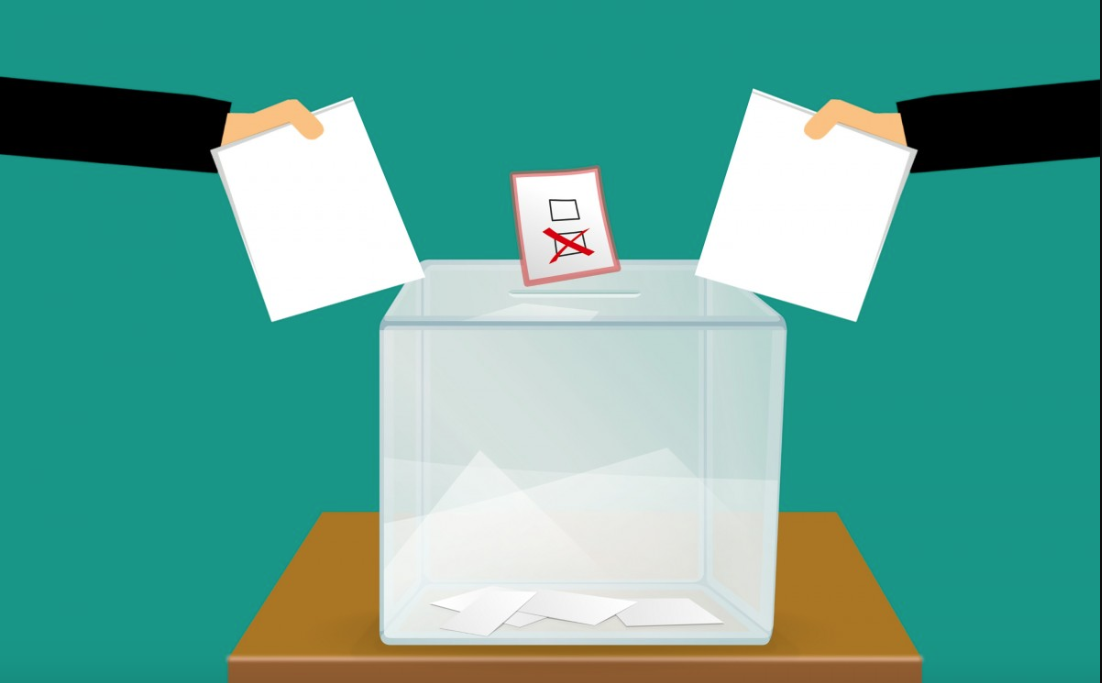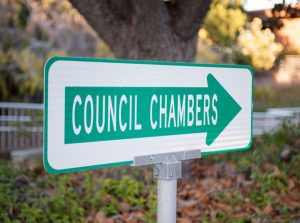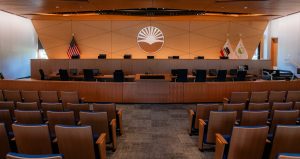Seven months before the election, a well-organized opposition has emerged against a proposed Sunnyvale charter change instituting six single-member City Council districts and an at-large directly elected mayor. Currently, the City’s mayor is elected from among Council Members.
No Directly Elected Sunnyvale Mayor filed its initial campaign report on July 25 and published a press release last week.
“The City Council has abused its power by overriding its residents’ written, polling, public testimony and past ballot measure initiative failures,” the group said in an Aug. 13 press release. “The council should have chosen to move forward with a 7 single-member district system or at least offered voters a choice in March.”
When the City began considering a change to its election system last September, Sunnyvale’s perennial debate about directly electing its mayor returned to the public conversation for the fourth time in 33 years. All previous attempts to change Sunnyvale’s method for electing its mayor have failed.
Nonetheless, at its June 18 meeting the Sunnyvale Council voted 5-2 to combine the two questions in one ballot measure, despite inconclusive polling results and strong public criticism for including the mayor election question.
Since then many — including some who favor a directly elected mayor — have warned that the all-or-nothing proposition is risky. If it doesn’t pass, Sunnyvale will likely face a costly California Voting Rights Act (CVRA) lawsuit that it’s almost certain to lose. (No California public agency has ever won a CVRA lawsuit or appeal.)
Additional Information Increases Support for 7 Districts
The Council commissioned Godbe Research to poll public sentiment about the number of districts (6 or 7) and direct election of Sunnyvale’s mayor. The poll of about 530 likely March 2020 voters doesn’t present a clear mandate. But the results do suggest that concerns about the mayor question sinking the charter change aren’t unfounded.
Respondents were first asked their opinions on 7 districts with the mayor selected from among the Council, and 6 districts with a directly elected mayor.
Participants then received more information about the question: the fact that the City may face a voting rights lawsuit — which 62 percent of those polled didn’t know — and arguments that have been made for and against each proposal. Then they were asked about the proposals again.
In the first round, 48 percent said they were likely to vote for the 7-district plan, while 53 percent were likely to vote for the 6-district/elected-mayor plan.
But after respondents learned more the picture changed. On the second round, while almost 59 percent favored the 7-district plan, support for the 6-district/elected-mayor plan barely budged to 55 percent.
Polling for the 7-district plan was the sole result outside the margin of error, the pollster said.
If Combined Measure Doesn’t Pass, Then What?
The polling information precipitated a lengthy discussion at the June 11 Sunnyvale Council meeting about what would happen if a ballot measure didn’t pass.
One predictable outcome is that a CVRA lawsuit will be filed against Sunnyvale; threatened in an October letter from Goldstein Borgen Dardian and Ho advising the City that its at-large election system violates the CVRA. Even if the City settled, it would still be on the hook for the plaintiffs’ legal bills as well as its own.
Council Members seemed to accept without question that Sunnyvale would lose in court. What they wanted to know was whether a judge would be likely to impose a status quo — seven districts — remedy or some other proposed system.
“There is a standard in federal law …[of]… deference … to the preferences of the locality, with the caveat that the preferences have to fully remedy the [CVRA] violation if one is found,” said Attorney Marguerite Leoni, a nationally recognized authority on voting rights litigation and Sunnyvale’s CVRA advisor.
“In the Santa Clara case* there was the existing system with a directly elected mayor,” she said. “The court … found that a system of districts with [an elected] mayor fully remedied the voting rights act violation.
“In litigation,” Leoni continued, “the council would be given the first opportunity to design the remedial plan.” A court wouldn’t impose “a plan based on what it thinks the charter requires. The court will consider whether a seven-member council without a directly elected mayor is a remedy for the violation.”
If the Council presented a 6-district/elected mayor plan, she said, “the court would give that deference … and analyze that based on its effectiveness at remedying the violation.”
Council Member Michael Goldman — one of the two voting against marrying the two questions — argued for simplicity. “The fewest variables is going to give you the best result,” he said. “We can all agree that it is absolutely vital that whatever we place on the ballot in March pass.
“Some people who absolutely do not want a directly elected mayor will feel that they’re having a gun pointed to their heads,” he continued. “They will get mad and they will campaign hard and long to defeat this.”
Council Member Glenn Hendricks argued that an elected mayor would ensure one Council Member answerable to all residents.
“This change will allow all voters in the city to continue in the process of directly electing the mayor,” he said. Otherwise “six-sevenths of the city will not be involved in electing the mayor.”
Even those favoring a directly elected mayor had reservations about combining the proposals.
“If I had my druthers I wouldn’t go for six-plus-one in this measure,” said Mayor Larry Klein. But, “if we lose, we’ve already done the outreach, we’ve already talked to residents about six districts, and we can move to six districts plus one at-large, without talking about the mayor.”
“I favor the directly elected mayor, however these are a lot of changes,” said Council Member Nancy Smith, who cast her vote that night against the 6-1 proposal. “I think I agree with all of the …speakers who were fine with seven districts.” It was, she said, the “simplest change to the charter.”
Vice Mayor Russ Melton didn’t appear daunted by the prospect of lawsuits precipitated by defeat of the 6-1 plan.
“The City Council will be making a decision about what the public interest is,” he said. “There’s this notion that we should avoid going to court…If we get to March and the voters have spoken and someone decides to take us to court I will follow the public interest.”
The balance of public opinion at the June 18 meeting was in favor of simplicity. “Our goal should be to have a ballot measure that passes in March otherwise the court will step in and take it out of our hands,” said resident Mike Serrone.
For more information, visit SunnyvaleElections.org.
*In 2018, the City of Santa Clara was found in violation of the CVRA, ordered to create six single-member Council districts and pay almost $3.2 million in plaintiff’s legal bills — in addition to its own $845,000 legal bill.












0 comments